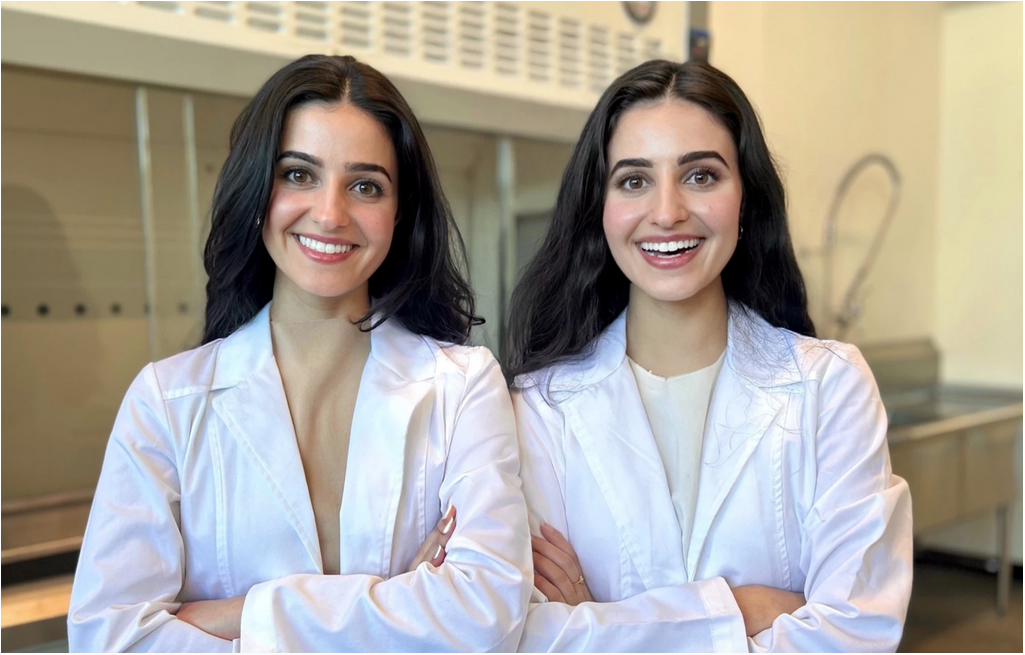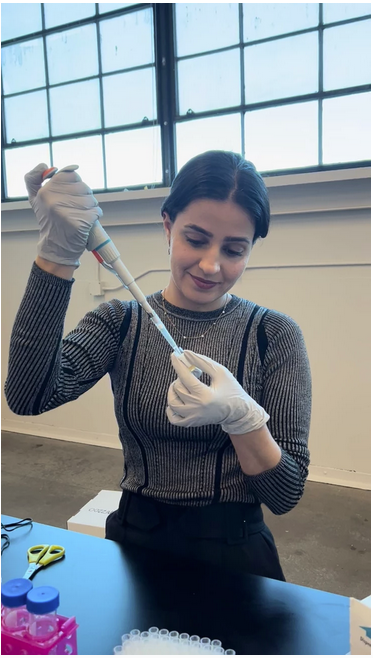
Our prosperity as a species — reliable food production, clean water, abundant energy, etc. — has always been inextricably linked to the devastation of Earth.
The industries we’ve created to drive human prosperity and economic growth are inherently flawed; by design, they are inseparable from their insatiable consumption of resources and destruction of global commons like clean air, water, climate, arable land, and biodiverse ecosystems.
In true human spirit, we’ve risen to fight this growing existential threat. Gen Z and Millennials especially — representing the majority of global consumers — have terraformed global fervor into a sustainability movement to ensure our planetary future, and have pushed businesses to align. More than any other industry, Fashion has been front-and-center to this movement as a cornerstone of global culture and identity.

Fashion is the third-most CO2-polluting supply chain on the planet, mainly driven by textile production. One pair of cotton jeans pollutes approximately 10kg of CO2, consumes 3,000L of water, and uses 10 square meters of land per year to be produced. Five years ago, sustainability was a way fashion brands could differentiate themselves to conscious consumers. Today, sustainability is table-stakes for ensuring the future of their business and relevance with the majority of consumers. So far, over one-third of the entire fashion industry has now committed to net zero carbon goals.
Unfortunately, like every other industry, the traditional technologies that produce our clothing are inherently linked to massive CO2 pollution and resource depletion. Fashion brands have extremely limited solutions today to achieve their important sustainability commitments and still sell apparel products.
To enable sustainable fashion, and to save Earth, it’s time to redesign the industry with new technologies that unify human and planet prosperity.
Enter Rubi
Rubi is on a mission to build the world’s most sustainable supply chains for people and planet. Today, we’re thrilled that our mission and continued work has been recognized with the closing of our $4.5 million Seed funding round. Our partners at Talis Capital and Necessary Ventures – along with the influential funds and angels in this space – are helping to bring Rubi’s vision to commercialization.
We won’t stop until we create a world where human prosperity and economic growth are planet-positive. We are driven by the belief that prosperity can be independent of depleting Earth’s resources. At Rubi, we’ve developed an innovative bioproduction technology platform that is able to turn carbon emissions into humanity’s most important materials. Inspired by how trees build themselves from CO2, our system uses biochemical processes powered by enzymes at an industrial scale to “eat” carbon emissions and make carbon-negative, resource-neutral products. [See demonstration by our founders.] When we succeed, we will redefine industrial supply chains to be symbiotic and in harmony with our planet.
Rubi’s first chapter solely focuses on redefining textile production for fashion. We make the same textiles fashion brands already use today, through our carbon-negative, zero-water, zero-land process. A pair of jeans made with Rubi fabric removes CO2 from the atmosphere, and consumes virtually no water or land. We will partner with visionary apparel brands to use Rubi fabric throughout their production and achieve their net zero carbon sustainability goals. When we scale to serve the full cellulosic textiles market, we can mitigate 2% of global CO2 emissions every year.
To save our planet, we must reimagine global industry and methods of production beyond fashion and across industries — but we’ll save that for another chapter ;)
Our Story
My twin sister, Leila, and I grew up in Northern California surrounded by redwood forests, in an immigrant family who fled their home country of Iran during the 1979 Revolution and rebuilt from scratch in the US.
I fell in love with trees, the science of how they worked, and the materials of which they were made. My core inspiration became using science and invention to unlock abundance and prosperity for people and planet. When I was 15, I co-authored my first scientific paper on artificial photosynthesis at the Lawrence Berkeley National Lab. I continued my journey as a scientist through 10 years of scientific research across computational materials science, energy materials and storage, biofuel, and biopolymers. I earned simultaneous degrees in Materials Science & Engineering and Business Administration from UC Berkeley, along the way building and racing full-size solar-powered cars with my college team CalSol. I went on to lead product teams and launch products as a PM in the tech industry. Especially as a materials engineer and product-thinker, I saw the carbon problem as an era-defining opportunity to unlock CO2 as a new natural resource and produce so many of the materials we use which are carbon based — like textiles, food, building materials, packaging, and more.
At the same time, Leila was enthralled by understanding the biological systems that evolved to build carbon-based life, and how she could take inspiration across nature and engineer intelligent systems of biology that could solve specific human problems which evolution itself was not solving for. She worked in bioengineering research labs since age 15, mostly focused on engineering nanomedicines and immunotherapies to treat patients with aggressive brain cancer. This work led her to medical school at Harvard, when she realized after completing her third year that climate change posed a significant and complex threat to human health on a global scale that was unpreventable by current technology. She was determined to use her background to build a scalable solution that could prevent disease and suffering by reversing climate change instead of treating its currently inevitable symptoms.
While we grew up to be scientists, we led a parallel life: growing up in the fashion industry. Our uncle is the founder of Bebe Stores, an iconic global women’s clothing brand that started from a single boutique store, which meant we grew up in the design studio with designers & merchants, at runway shows and photoshoots, and at the HQ with supply chain experts and businesspeople.
Being a part of both the science innovation and fashion worlds gave us the clear perspective that fashion is so ripe for disruption, and so possible to become carbon-negative. That’s how Rubi was born. I invented our patent-pending technology about a year ago, Leila and I worked part-time on building Rubi in our apartment kitchen, and then we teamed up full time last year to build a transformational company.
Rubi’s name is inspired by nature and its harmonious carbon cycle. A small but mighty enzyme present in plants, Rubisco, powers photosynthesis and is thought to be the most abundant enzyme on Earth. Rubisco inspires us and our vision of circular, planet-positive systems, and is the namesake of Rubi.
Source
Rubi Laboratories, press release, 2022-02-17.
Supplier
Share
Renewable Carbon News – Daily Newsletter
Subscribe to our daily email newsletter – the world's leading newsletter on renewable materials and chemicals













